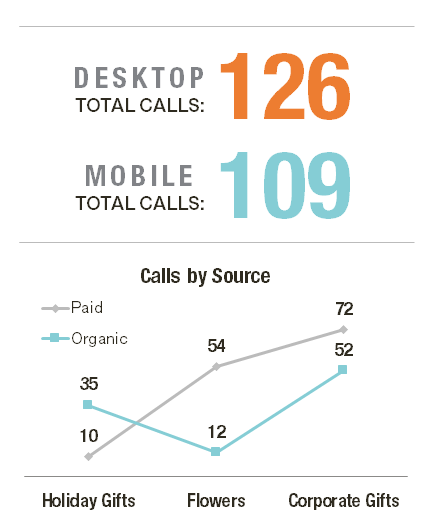Unlocking The Hidden Value Of Dynamic Number Insertion
Columnist CJ Arseneau explains how marketers can take advantage of dynamic number insertion technology, or keyword-level call tracking, to increase lead generation and caller engagement.
 Dynamic number insertion (DNI) technology, often referred to as keyword-level call tracking, has been around for a while, with marketers effectively using it as an attribution tool for digital advertising.
Dynamic number insertion (DNI) technology, often referred to as keyword-level call tracking, has been around for a while, with marketers effectively using it as an attribution tool for digital advertising.
At its basic level, DNI involves replacing phone numbers within landing pages and websites based on how the person found the site. The technology allows marketers to track and attribute phone leads back to the ads, search listings or keywords that were used to generate engagement. However, this is just scratching the surface of DNI’s capabilities.
As today’s search marketers are seeking to generate more qualified inbound calls, they realize the need to customize the customer’s experience to drive higher and more targeted consumer responses. DNI can help meet this demand by leveraging deeper insights into the consumer behavior that drove their searches or clicks and how they are responding to ads.
Following are some ways that marketers can further extend their DNI investments beyond keyword and search engine attribution to help maximize ad campaign response.
Dynamically Replace Content To Increase Customer Engagement
Taking DNI beyond phone number replacement alone, marketers also can use the technology to strategically replace text and images on a landing page or website for a more tailored consumer experience that will drive increased calls.
For example, if someone enters “corporate gift baskets” as a search term and clicks on a florist’s ad, DNI can be used to ensure the text and photos appearing on a business’s landing page reflect gift basket offers and choices rather than floral arrangements.

Granular tracking of custom URL parameters provides insight into user behaviors that drive calls and additional optimization opportunities.
This not only allows marketers to provide specific promotions to drive engagement but also extends marketers’ ability to customize the consumer’s website experience based on the specific campaign that drove the consumer to the site.
The options for triggering content through DNI are now more extensive, as marketers can use the technology to create replacement text based on specific landing page URL parameters, including internal identifiers or search engine-supported parameters.
For example, a national home services brand offering plumbing, house cleaning and other services can use DNI to offer coupons, promotions and specific phone numbers to call based on the campaign that drove the website visit.
In one scenario, a consumer who finds the brand based on searching for “home cleaning services” can be offered a free quote on home cleaning needs and a 20-percent-off coupon for their first cleaning to be redeemed when they call to make an appointment.
A second consumer may find the same site based on a search for “glass repair” but will be shown a free-installation-with-purchase offer — also to be redeemed when they call. With DNI employed, both consumers receive a customized on-site experience based on the referring campaign and are incentivized to call the business.
Putting Richer Analytics To Work
DNI can also be used to gather deeper consumer insights. For instance, it can be used to track campaigns back to internal bid management and SEM (search engine marketing) data, as well as attribute inbound call conversions to paid ad clicks versus organic search.
URL parameters can also be used to identify the type of device (mobile or desktop) they used to click through to a landing page, the geographic location of the consumer and more. DNI also enables click-path tracking to see which pages and forms the consumer visited before placing a call and are driving engagement.
With these rich consumer engagement analytics in hand, DNI allows marketers to align their overall digital campaigns with consumer preferences and patterns to drive increased engagement. This includes refining the creative, keywords and other ad buy elements, as well as the text and images to be dynamically replaced on landing pages to drive more calls.
Also, by filtering calls driven by specific paid campaigns versus organic searches, marketers can focus on SEM and SEO activities separately and clearly determine where additional focus may be required.
Extending the use cases offered by DNI technology allows marketers to use its deep attribution capabilities to close the conversion gap between online activity and offline calls.
Triggering DNI beyond standard search engine and keyword elements makes it possible for marketers to deliver a more customized experience that could ultimately increase lead generation and caller engagement.
Contributing authors are invited to create content for MarTech and are chosen for their expertise and contribution to the search community. Our contributors work under the oversight of the editorial staff and contributions are checked for quality and relevance to our readers. MarTech is owned by Semrush. Contributor was not asked to make any direct or indirect mentions of Semrush. The opinions they express are their own.
Related stories